Asia Japan

What are the best destinations in Asia for foodies ?
Asia is a haven for food lovers with its diverse range of cuisines. Here are the best destinations in Asia for foodies: Tokyo, Japan; Bangkok, Thailand; Penang, Malaysia; Hong Kong; Seoul, South Korea; Mumbai, India; Ho Chi Minh City, Vietnam; Taipei, Taiwan; Osaka, Japan; and Singapore. Each destination offers unique and delicious dishes that are sure to satisfy any food enthusiast's cravings.

What are the most popular cities in Asia for tourists ?
The world's largest continent, Asia, offers a plethora of destinations that cater to various types of travelers. From ancient history and culture to modern skyscrapers and bustling streets, Asia has it all. Here are some of the most popular cities in Asia for tourists: Tokyo, Japan; Bangkok, Thailand; Seoul, South Korea; Hong Kong, China; and Singapore.

What are the best places to go for adventure travel in Asia ?
Asia is a continent filled with diverse cultures, breathtaking landscapes, and thrilling adventures. Whether you're seeking adrenaline-pumping activities or off-the-beaten-path explorations, Asia has something to offer every type of adventure traveler. Here are some of the best places to go for adventure travel in Asia: 1. Nepal - Trekking and Mountaineering 2. Thailand - Island Hopping and Water Sports 3. Vietnam - Motorbiking and Rock Climbing 4. Indonesia - Volcano Hiking and Diving 5. Japan - Skiing and Hot Springs
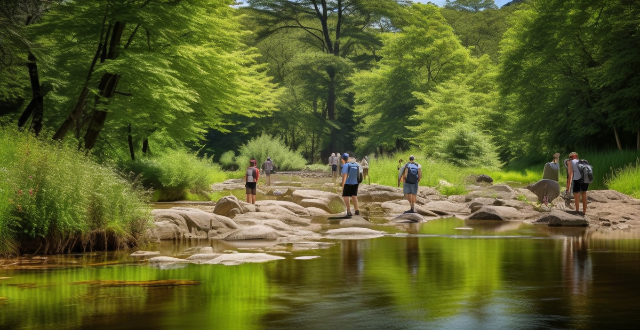
What are the top tourist attractions in Asia ?
The largest continent on Earth, Asia, is home to a plethora of diverse cultures, natural wonders, and man-made marvels. It boasts some of the most visited tourist attractions globally, catering to various interests from history and architecture to adventure and relaxation. The Great Wall of China, Taj Mahal, Angkor Wat, Forbidden City, Boracay Beach, Halong Bay, Fushimi Inari Shrine, and Gardens by the Bay are just a few of the top tourist attractions in Asia. These attractions represent just a fraction of the many fascinating places to visit in Asia. Each has its unique charm and historical significance, offering unforgettable experiences for travelers around the globe.

What are the must-see historical sites in Asia ?
Asia is a continent with a rich history and diverse cultural heritage. It is home to many ancient civilizations that have left behind numerous historical sites, which are worth exploring. Here are some of the must-see historical sites in Asia: - The Great Wall of China - Angkor Wat - Taj Mahal - Borobudur Temple - Machu Picchu - Historic City of Ayutthaya - Shwedagon Pagoda - Hiroshima Peace Memorial Park - Potala Palace

How does Japan manage its immigration with its strict policies ?
Japan's Immigration Management with Strict Policies Japan maintains strict immigration policies to protect its cultural identity and ensure the smooth integration of immigrants into society. These policies include visa requirements, a points-based system for evaluating foreign workers, a residence card system, employment regulations, and language requirements. Foreign nationals must obtain a visa unless exempt, and there are different types of visas depending on the purpose of visit. The points-based system assigns eligibility based on factors like age, education, experience, and language skills. Once in Japan, foreigners must register their residence within 90 days and carry a Residence Card at all times. Employers must comply with laws regarding foreign workers' wages, hours, and safety standards. Language proficiency is often required for work or study visas to facilitate communication and integration into Japanese society. Overall, these measures aim to manage immigration legally and harmoniously while contributing positively to Japan's economy and society.

What are the best beaches to visit in Asia ?
Asia is home to some of the most beautiful and diverse beaches in the world. Here are some of the best beaches to visit in Asia: 1. Boracay Island, Philippines 2. Phuket Island, Thailand 3. Bali, Indonesia 4. Koh Samui, Thailand 5. Langkawi, Malaysia 6. Siargao Island, Philippines 7. Nha Trang, Vietnam 8. Hua Hin, Thailand

What are the most romantic destinations in Asia for couples ?
The text lists the most romantic destinations in Asia for couples, including Bali, Indonesia; Kyoto, Japan; Maldives; Seoul, South Korea; and Phuket, Thailand. Each destination offers unique experiences that cater to different interests and preferences.
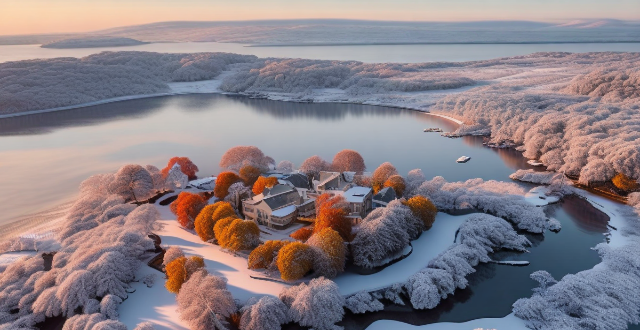
What are the must-visit romantic honeymoon destinations in Asia ?
Asia boasts numerous romantic honeymoon destinations perfect for couples seeking a blend of natural beauty, cultural experiences, and luxurious amenities. From the pristine beaches of Bali and Maldives to the historic temples of Kyoto and Siem Reap, each location offers unique experiences tailored for an unforgettable honeymoon. Other highlights include the volcanic landscapes of Jeju Island, the winter wonderland of Niseko, the cultural heart of Ubud, the northern Thai charm of Chiang Mai, and the scenic cruising opportunities in Ha Long Bay. These destinations ensure a honeymoon filled with love, relaxation, and adventure.

Where will the next Summer Olympics football tournament be held ?
The next Summer Olympics football tournament will take place in Tokyo, Japan from July 23 to August 8, 2021. The matches will be played at several stadiums across Japan, including Saitama Stadium, Sapporo Dome, International Stadium Yokohama, Nippon Gaishi Stadium, and Kashima Soccer Stadium. There will be 16 men's national teams and 12 women's national teams competing for gold medals in their respective categories. Due to the COVID-19 pandemic, there have been some changes to the schedule and format of the tournament, including limited spectators, staggered scheduling, and regular testing for all participants.
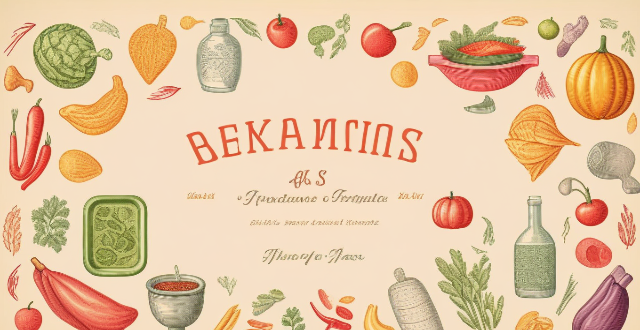
How do people in Japan celebrate the Lunar New Year with food ?
In Japan, the Lunar New Year, known as Oshogatsu, is celebrated through various food traditions that symbolize wishes for the new year. One iconic tradition is osechi ryori, a collection of colorful and symbolic dishes arranged in a lacquer box called an ojubako. These dishes include Kohaku Namasu, Kuromame, Tazuki, Kagamobashi, and Datemaki, each representing different aspects of life such as success, health, luck, connections, and learning. Another important food is mochi, a sweet rice cake believed to bring longevity and happiness. On New Year's Day, many families enjoy ozoni, a warm soup with mochi or soba noodles, vegetables, and sometimes chicken or fish, symbolizing the transition from the old year to the new one. While not as widely celebrated as other holidays, these culinary traditions remain significant for those who observe the Lunar New Year in Japan.

What are the best places to visit in Asia for nature lovers ?
Asia is a continent with diverse landscapes and natural wonders that offer an incredible experience for nature lovers. Here are some of the best places to visit in Asia for nature lovers: The Himalayas in Nepal is a paradise for trekkers and mountaineers. It is home to eight of the world's fourteen highest mountains, including Mount Everest. The region offers breathtaking views of snow-capped peaks, lush valleys, and cascading waterfalls. Some popular treks include the Annapurna Circuit, Langtang Valley Trek, and Everest Base Camp Trek. Yangshuo is a small town located in Guangxi Province, China. It is known for its stunning limestone karst formations, crystal-clear rivers, and picturesque countryside. Visitors can take a bamboo boat ride on the Li River, cycle through the countryside, or hike to the top of Moon Hill for panoramic views of the surrounding landscape. Bali is an island paradise in Indonesia that offers a unique blend of culture, beaches, and nature. It is home to several volcanic mountains, such as Mount Batur and Mount Agung, which offer challenging hikes with rewarding views. The island also has numerous rice terraces, waterfalls, and coral reefs that are perfect for snorkeling and diving. Jeju Island is a volcanic island off the southern coast of South Korea that is known for its beautiful beaches, hiking trails, and scenic landscapes. The island has several natural attractions, including Manjanggul Lava Tube, Cheonjiyeon Waterfall, and Hallasan Mountain, the highest peak in South Korea. Phong Nha-Ke Bang National Park is a UNESCO World Heritage Site located in central Vietnam. It is home to the largest cave in the world, Son Doong Cave, and several other impressive cave systems. The park also has lush forests, limestone mountains, and underground rivers that are perfect for kayaking and caving adventures. Zhangjiajie National Forest Park is located in Hunan Province, China. It is known for its towering sandstone pillars and steep cliffs that resemble those found in Avatar movie. The park also has several hiking trails, scenic viewpoints, and natural bridges that offer breathtaking views of the surrounding landscape. Khao Yai National Park is Thailand's third largest national park and a UNESCO World Heritage Site. It is home to diverse wildlife, including elephants, tigers, and gibbons. The park also has several hiking trails, waterfalls, and scenic viewpoints that offer stunning views of the surrounding landscape. Kinabalu Park is located on the island of Borneo in Malaysia. It is home to Mount Kinabalu, the highest peak in Southeast Asia. The park also has several hiking trails, including the challenging climb to the summit of Mount Kinabalu. Along the way, visitors can enjoy stunning views of the surrounding rainforest and wildlife.
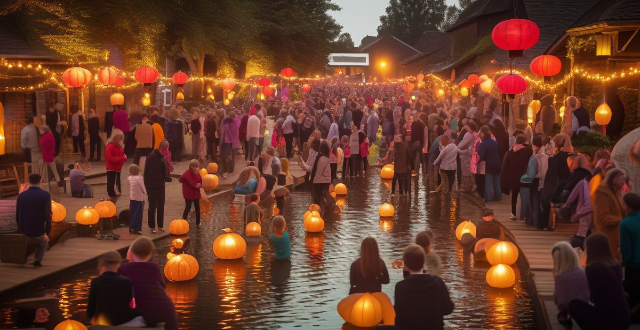
What are the most unique and interesting festivals in Asia ?
Asia is home to some of the most unique and interesting festivals in the world, showcasing the rich heritage, customs, and beliefs of its diverse cultures. These festivals include Songkran (Thailand), Lantern Festival (China), Holi (India), Naadam Festival (Mongolia), and Eid al-Fitr (Malaysia). Each festival has its own distinct features, such as water fights, lantern displays, color powder throwing, wrestling competitions, and charity giving. These celebrations not only provide entertainment but also serve as a way for people to come together, honor their traditions, and create lasting memories.

Can you provide examples of cultural fusion in different parts of the world ?
Cultural fusion, also known as cultural integration or hybridity, is a phenomenon that occurs when two or more distinct cultures interact and blend to create a new, unique culture. This process can be observed in various parts of the world, where different cultures have come together to form new traditions, languages, cuisines, art forms, and lifestyles. Some examples of cultural fusion include Korea-Japan cultural exchange, India-Pakistan cultural influence, Spain-Morocco cross-cultural interaction, France-England historical interactions, Mexico-United States border culture, and Caribbean-African diasporic cultures. These examples illustrate how cultural fusion can lead to the creation of new and exciting forms of expression across different aspects of society.

Where can I find a fine dining experience in Tokyo, Japan ?
Tokyo is famous for its diverse culinary scene, offering a wide range of fine dining experiences that cater to various tastes and preferences. Whether you're in the mood for traditional Japanese cuisine or international fare, there are plenty of options to choose from. Here are some of the top places to find a fine dining experience in Tokyo: ## Traditional Japanese Cuisine ### Kohju - **Location**: Ginza district - **Cuisine**: Kaiseki (traditional multi-course meal) - **Highlights**: Elegant atmosphere, seasonal ingredients, skilled chefs - **Price Range**: High-end ### Ishikawa - **Location**: Shibuya district - **Cuisine**: Sushi (raw fish served with vinegared rice) - **Highlights**: Fresh seafood, expert sushi craftsmanship, intimate setting - **Price Range**: Moderate to high-end ## International Cuisine ### Quintessence - **Location**: Shiodome district - **Cuisine**: French - **Highlights**: Innovative dishes, impeccable service, stunning views of Tokyo Bay - **Price Range**: High-end ### Narisawa - **Location**: Minami Aoyama district - **Cuisine**: Modernist Japanese with international influences - **Highlights**: Creative presentations, locally sourced ingredients, artistic plating - **Price Range**: High-end ## Vegetarian/Vegan Options ### Yohji - **Location**: Harajuku district - **Cuisine**: Vegan Japanese fusion - **Highlights**: Flavorful plant-based dishes, unique flavor combinations, cozy atmosphere - **Price Range**: Moderate ### Sougo - **Location**: Roppongi district - **Cuisine**: Vegan Italian - **Highlights**: Hearty pastas, authentic Italian flavors, friendly staff - **Price Range**: Moderate to high-end ## Budget-Friendly Options ### Ichiran Ramen - **Location**: Multiple locations throughout Tokyo - **Cuisine**: Ramen (noodle soup) - **Highlights**: Customizable broth and toppings, fast service, affordable prices - **Price Range**: Affordable ### Tenya - **Location**: Multiple locations throughout Tokyo - **Cuisine**: Tendon (tempura over rice) - **Highlights**: Crispy tempura, generous portions, quick meals on the go - **Price Range**: Affordable No matter your budget or dietary preferences, Tokyo offers a diverse array of fine dining experiences that will leave you satisfied and eager to return for more.

Which Asian countries should I visit for a cultural experience ?
Asian countries offer a diverse range of cultural experiences, including festivals, traditional practices, and historic landmarks. Recommended destinations include Japan's Kyoto and Tokyo, China's Beijing and Shanghai, India's Delhi and Agra, Thailand's Bangkok and Chiang Mai, Vietnam's Hanoi and Ho Chi Minh City, and South Korea's Seoul and Busan. Each country offers unique cuisine and activities for travelers seeking a rich cultural experience.

How do privacy rights differ across countries and cultures ?
Privacy rights vary across countries and cultures due to differences in legal frameworks, cultural norms, and technological advancements. The United States protects privacy through federal and state laws, while Europe has a unified approach with the General Data Protection Regulation (GDPR). Asia has varying levels of protection, with some countries prioritizing national security over individual privacy concerns. Cultural norms also play a significant role, with individualistic cultures valuing personal privacy more than collectivist ones. Technology advancements have raised new questions about protecting privacy, including surveillance technologies and online tracking practices. Understanding these differences is essential for developing effective strategies to protect privacy both domestically and internationally.
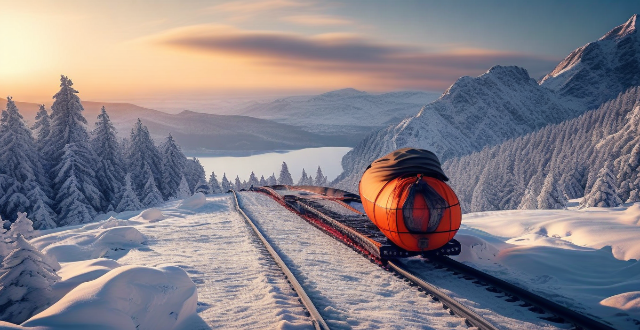
Can you recommend some breathtaking yet less crowded hiking trails around the world ?
This guide recommends breathtaking yet less crowded hiking trails around the world, from the Sierra Nevada in California to the Himalayas in Nepal. It offers highlights and crowd avoidance tips for each trail.

How many virus variants have been identified so far ?
This article identifies several notable virus variants, including the SARS-CoV-2 Variants (Alpha, Beta, Gamma, Delta, Omicron), Influenza Virus Variants (H1N1, H3N2, H5N1), HIV Variants (Subtype B, Subtype C, Various Recombinant Forms), Hepatitis C Virus Variants (Genotype 1, Genotype 2, Genotype 3), Dengue Virus Variants (DENV-1, DENV-2, DENV-3, DENV-4), and Zika Virus Variants (Asian Lineage, East African Lineage, West African Lineage). It highlights the constant emergence of new variants due to viruses mutating and adapting to their environments.

Are there any cultural differences in perceptions of academic integrity ?
The perception of academic integrity can vary across cultures due to differences in values, beliefs, and practices. In individualistic cultures, academic integrity is often viewed as an individual responsibility, while collectivist cultures place more emphasis on group harmony and cooperation. Power distance can also influence perceptions of academic integrity, with high power distance cultures being more reluctant to report instances of academic dishonesty. The concept of time can also play a role, with monochronic cultures prioritizing efficiency over quality, while polychronic cultures focus on building relationships. Attitudes towards rules and regulations can also vary across cultures, with rule-based cultures viewing academic integrity as a set of strict rules, while relation-based cultures view it as something that depends on the relationship between individuals. Understanding these cultural differences can help educators design effective strategies to promote academic integrity among diverse student populations.